Pernambuco - state in the Northeast Region of Brazil
 Pernambuco is a state in the Northeast region of Brazil. It is a true microcosm of the region, with a densely populated coastal region (Zona da Mata) containing bustling cities and fantastic beaches, a festive and culturally vibrant Agreste, a semi-arid and sparsely populated Sertão shrouded in folklore and legend, and finally, it is bordered in the south by the Velho Chico (São Francisco river), one of Brazil's economically and historically most important rivers which deeply shaped the culture of the people in the surrounding region.
Pernambuco is a state in the Northeast region of Brazil. It is a true microcosm of the region, with a densely populated coastal region (Zona da Mata) containing bustling cities and fantastic beaches, a festive and culturally vibrant Agreste, a semi-arid and sparsely populated Sertão shrouded in folklore and legend, and finally, it is bordered in the south by the Velho Chico (São Francisco river), one of Brazil's economically and historically most important rivers which deeply shaped the culture of the people in the surrounding region.
Regions
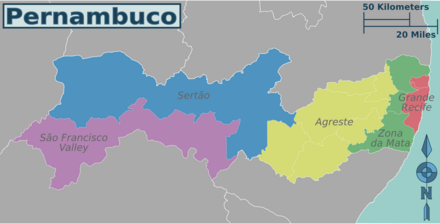
A semi-arid and sparsely populated region where the legendary bandit Lampião once roamed.
A fertile area in the middle of the Sertão surrounding the Velho Chico, which is literally the "hottest" wine-producing region in the World
An area of transition between the Sertão and the Zona da Mata with rich local culture and large festivities
The state's 4 million people metropolis, containing many excellent beaches, cultural manifestations, and the colonial beauty of Olinda
The green and fertile region of the state, with many natural attractions and historical heritage from Brazil's sugarcane plantation era
Cities
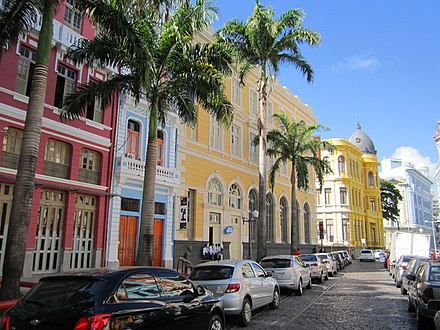
- Recife , the vibrant state capital with interesting museums, popular urban beaches, and both historical and modern neighbourhoods, is also the birthplace of frevo, a dance and musical style considered to be a UNESCO World Heritage.
- Caruaru , largest city of the Agreste famous for the forró music and celebrations of the festival for São João (St. John).
- Goiana , small town known for both its historical center and beautiful beaches
- Olinda , with its colonial historical heritage, is a UNESCO World Heritage Site and probably one of Brazil's most beautiful cities
- Itamaracá Island, famous for its beaches, nautical sports and for the Dutch-built Orange Fortress
- Igarassu , another city with an impressive colonial historical center, including Brazil's oldest church (1535)
- Petrolina , largest city of the São Francisco Valley and a good base for agro- and enotourism
- Porto de Galinhas , a seaside resort town near Recife famous for its beach with crystal-clear waters and natural pools, located in the municipality of Ipojuca which contains other great beaches
- Triunfo , charming oasis town in the middle of the Sertão region
Other destinations
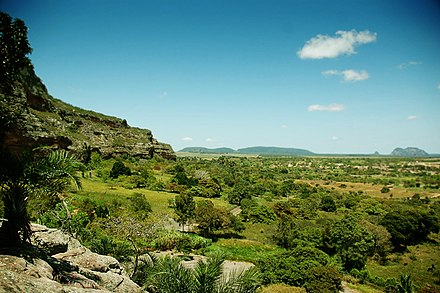
- Fernando de Noronha - A stunningly beautiful archipelago which is a UNESCO World Heritage Site and a global example of sustainable tourism, as well one of Brazil's most coveted (but expensive) destinations. Although administratively part of Pernambuco, is quite far from the mainland and reachable only by plane.
- Vale do Catimbau National Park - Brazil's second largest archeological site, with over 2000 caves including 28 sites with cave paintings up to 6000 years old, and many canyons.
Understand
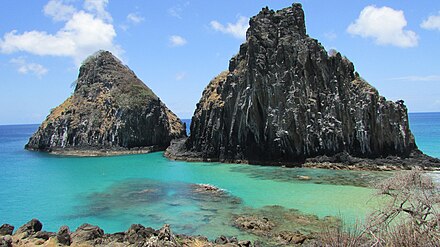 Pernambuco was one of the first regions of Brazil to be settled by European colonisers, with its economic exploration concentrated in the Zona da Mata initially via pau-brasil (Pernambuco wood) logging and later via sugarcane plantations. The presence of indigenous Brazilians, Portuguese Catholic settlers, and African slaves led the state to form a strong and complex cultural heritage, which can be seen in the state's architecture (that can be admired in cities such as Olinda, Goiana and Igarassu), musical styles such as the frevo (a UNESCO cultural World Heritage) and maracatu, as well as a vast number of religious and non-religious celebrations. The state also was briefly colonised by the Dutch, which also left their legacy, and even after independence, Pernambuco maintained a strong geopolitical relevance despite the state's small size.
Pernambuco was one of the first regions of Brazil to be settled by European colonisers, with its economic exploration concentrated in the Zona da Mata initially via pau-brasil (Pernambuco wood) logging and later via sugarcane plantations. The presence of indigenous Brazilians, Portuguese Catholic settlers, and African slaves led the state to form a strong and complex cultural heritage, which can be seen in the state's architecture (that can be admired in cities such as Olinda, Goiana and Igarassu), musical styles such as the frevo (a UNESCO cultural World Heritage) and maracatu, as well as a vast number of religious and non-religious celebrations. The state also was briefly colonised by the Dutch, which also left their legacy, and even after independence, Pernambuco maintained a strong geopolitical relevance despite the state's small size.
From a traveller's perspective, Pernambuco offers much in terms of fusion culture, beautiful beaches and historical heritage that the state of Bahia also offers, but in a more compact and probably easier to navigate form. The overwhelming majority of visitors to the state stay in the Grande Recife and Zona da Mata regions, naturally due to convenience of accessibility and due to the reputation of the state's beaches, but those who venture beyond will be certain to find the Brazilian Northeastern traditions, friendliness and religiousness on its most authentic form, as well as the truly unexpected, such as the coziness and charm of Triunfo, and the excellent wines and Japanese food of Petrolina.
Far from the mainland, in the islands of Fernando de Noronha, due to rigorous (but necessary) environmental protection laws, visitation is limited and generally out of range of budget travellers. Those who can afford it, however, will be certain to find one of Brazil's (and maybe the World's) best kept treasures.
Get in
By road
BR 101 is a main Brazilian Federal road who connects Recife with São Paulo, Rio de Janeiro and Salvador on the south leg; and Natal, Joao Pessoa on the north leg. The state also has BR232 and BR 408 which connects with another state cities and Campina Grande (BR408).
By plane
Recife (IATA: REC) has a large international airport with daily non-stop flights to Lisbon, Madrid, Miami, almost all Brazilian state capitals; and also has seasonal charters from Frankfurt, Milan, Paris and Buenos Aires.
Caruaru (IATA: CAU), Petrolina (IATA: PNZ) and Fernando de Noronha (IATA: FEN) have regional airports.
By sea
You can arrive in cruise ships at the Port of Recife (dead link: February 2023) or at the Fernando de Noronha Archipelago. The cruises come from Europe (usually Lisbon and Malaga) or from the Americas (usually Miami, Buenos Aires and Santos).
By river
You can arrive in Petrolina via the São Francisco River. The navigable part of the river covers the states of Minas Gerais, Bahia and Pernambuco.
Get around
See
Beaches
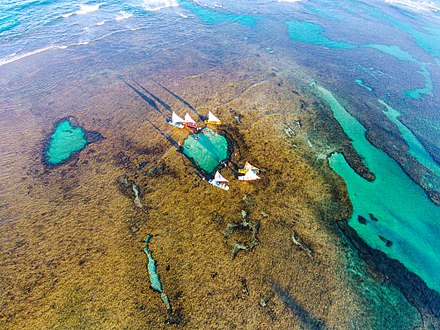 Pernambuco has the reputation of having many of Brazil's best beaches. Partly it is because of Fernando de Noronha, which contains unspoiled beaches with turquoise waters surrounded by lush greenery or limestone walls, such as Baía do Sancho, Baía dos Porcos e Praia do Leão.
Pernambuco has the reputation of having many of Brazil's best beaches. Partly it is because of Fernando de Noronha, which contains unspoiled beaches with turquoise waters surrounded by lush greenery or limestone walls, such as Baía do Sancho, Baía dos Porcos e Praia do Leão.
In the mainland, Porto de Galinhas in the municipality of Ipojuca is also one of the country's most famous beaches, due to its natural pools with crystal-clear waters, perfect for swimming, snorkelling or just admiring. Not far from it, the Carneiros beach in the municipality of Tamandaré is surrounded by forests of coconut trees and also forms natural pools during low tide.
While not one of the state's most beautiful beaches, Boa Viagem in Recife offers a very authentic urban beach experience where local Recifenses far dwarf tourists in number, with affordable places to drink to eat.
Historical heritage
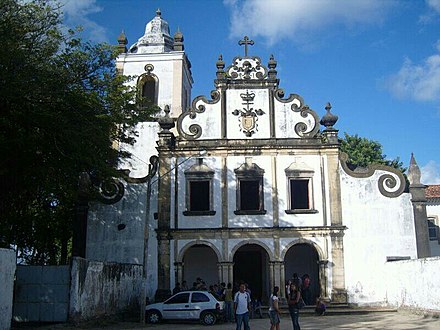 As one of the first regions in Brazil to be settled by Portuguese colonisers, and a former center of the sugarcane plantation economy during the Colonial era, it is not surprising the Pernambuco contains some of Brazil's most valuable historical heritage. The former state capital of Olinda (a UNESCO World Heritage site) together with Ouro Preto in the state of Minas Gerais, is certainly one of the country's most beautiful colonial towns.
As one of the first regions in Brazil to be settled by Portuguese colonisers, and a former center of the sugarcane plantation economy during the Colonial era, it is not surprising the Pernambuco contains some of Brazil's most valuable historical heritage. The former state capital of Olinda (a UNESCO World Heritage site) together with Ouro Preto in the state of Minas Gerais, is certainly one of the country's most beautiful colonial towns.
There are other pleasant colonial era towns such as Goiana and Igarassu, the latter containing the Igreja dos Santos Cosme e Damião, Brazil's oldest (1535) church. The Old Town of Recife (Recife Antigo), containing several XVII century buildings and the oldest synagogue of the Americas, is another beautiful (although unpolished) historical quarter. The Dutch-built Fort Orange in Itamaracá, built in 1631, is a popular day trip from Recife.
Nature and archeology
The Vale do Catimbau National Park is Pernambuco's premium but quite unspoiled destination in both ecotourism and archeological tourism, being the second largest archeological park of Brazil. It contains 28 sites with pre-historical cave paintings, as well as an amazing landscape of canyons and rock formations, caatinga vegetation, and over 2,000 caves. Access to the park is via the city of Buíque.
Do
Culture
.jpg/440px-Frevo_dancers_-_Olinda,_Pernambuco,_Brazil(4).jpg) As much of the Brazilian Northeast region, the culture of Pernambuco is characterised by music and dance, and by a rich folklore based on Catholicism with syncretic (African religion) elements. Certainly the most famous music and dance style originated in the state is the frevo, declared a cultural UNESCO World Heritage, which has evolved from music of military marches and the capoeira martial art. Another major tradition from Pernambuco is the maracatu, a performance based on (African) traditions and latter with added religious syncretic elements. Finally, the forró, a Northeastern music and "ballroom dance" style originally associated with the celebration of Christian saints, is also widely popular in the state.
As much of the Brazilian Northeast region, the culture of Pernambuco is characterised by music and dance, and by a rich folklore based on Catholicism with syncretic (African religion) elements. Certainly the most famous music and dance style originated in the state is the frevo, declared a cultural UNESCO World Heritage, which has evolved from music of military marches and the capoeira martial art. Another major tradition from Pernambuco is the maracatu, a performance based on (African) traditions and latter with added religious syncretic elements. Finally, the forró, a Northeastern music and "ballroom dance" style originally associated with the celebration of Christian saints, is also widely popular in the state.
Events
.jpg/440px-Marcelo_Calero_conhece_o_S%C3%A3o_Jo%C3%A3o_de_Caruaru_(27763490442).jpg)
- In February, while the Brazilian Carnival (Carnaval) is a nationwide event, Pernambuco hosts some of the most unique Carnaval celebrations. The frevo and maracatu music and dances often replace the samba as main rhythm. Some of the state's most famous Canaval celebrations include:
- In Triunfo, the partygoers dress up as Caretas, wearing colourful costumes and masks with "bad mood" facial impressions
- Olinda is nationwide famous for its parade of giant dolls (Bonecos de Olinda)
- Recife is one of the street Carnaval parties with most variety of parades in Brazil, the most famous being the Galo da Madrugada, which gathers more than 2 million people
- In June, Caruaru hosts one of Brazil's largest São João festivals, with about 1.5 million visitors annually. It is a combination of traditional festa junina dances and typical foods with live music from renowned forró, sertanejo and other artists. The second largest São João from Pernambuco, with similar format, is hosted in Gravatá
- In July, Caruaru hosts the Fenearte, the largest international handcrafts' fair from Latin America
- Paixão de Cristo (Christ's Passion) in Nova Jerusalém, during Easter break
- Missa do Vaqueiro (Cowboy Mass), in Serrita
Diving
Fernando de Noronha is likely the best scuba diving destination in South America, perhaps only rivalled by the semi-inaccessible Isla Malpelo in Colombia. There are in total 26 diving sites, the most famous one being Pedras Secas, with incredible underwater caves and rocky formations.
Buy

Eat

Drink

Stay safe
Pernambuco has the highest murder rate of any Brazilian state, a whopping 50.7 per 100,000. Most of killings are related to drug trafficking, which has little impact on the ordinary tourists. Fernando de Noronha is actually extremely safe, and in other of the state's most popular destinations, including Porto de Galinhas and the historical center of Olinda, you are unlikely to run into major problems.
That said, it is also true that in most of the state, poverty is widespread. Armed robberies, both aimed at pedestrians and drivers, especially in big cities such as Recife, are not uncommon. While not so common in smaller cities, some of them are quite poor, such that someone who obviously looks like a tourist, carrying for instance expensive camera equipment, may attract unwanted attention.